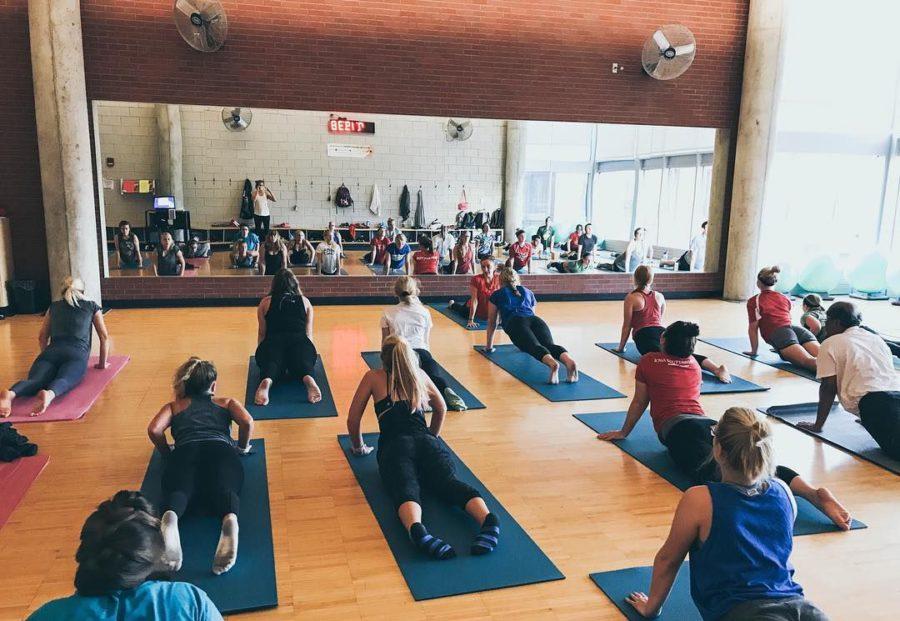Fitness during Winter: Tips from Rec Services
Megan Slattery leads a Sunrise Yoga class, one of the group fitness classes offered by Recreation Services.
December 8, 2017
It’s that time of year again.
Finals are almost over, temperatures are starting to drop and students can practically taste the holiday treats being made in houses and shops all around.
It’s the time of year when exercising outside is more difficult, and eating healthy is a bit more challenging. Recreation Services, however, offers ideas to not only stay in shape but to have fun while doing it.
“We literally have 120 plus classes every week,” said Ashley Artist, fitness coordinator for Rec Services. “Anywhere from yoga, Pilates, resistance training, cardio classes, functional training classes, we’ve just got something for everyone. Honestly, no matter who you are, there’s something on our group fitness schedule that you’ll like for indoor fitness.”
The classes are categorized from levels one through three based on level of difficulty and are listed here.
Some of the most popular classes include yoga, bar, cycling, boxing and specialty dance classes such as Zumba, hip hop and jazzercise.
Most of the group fitness classes are taught by students. Both personal trainers and fitness instructors undergo a 12-week training program. They don’t have to be health science related majors, and Artist said being an instructor helps students practice leadership skills and public speaking. Details are available here.
Next semester’s fitness class schedule is expected to be released later this month.
Artist also offered exercises students can do without leaving their apartment. Any body weight exercises like squats, sit ups, pushups, jogging in place or high knees can be done without any equipment.
Otherwise, everyday items such as canned food and water bottles can be used for weights and a chair can function like a bench.
Artist encouraged embracing winter through activities like cross country skiing, downhill skiing, ice skating, snow shoeing and sledding.
“Get out and do something fun over [Winter] Break,” Artist said.
Coming back from Winter Break, Artist said some students may experience guilt about their health habits due to New Year’s.
Nora Hudson, assistant director of fitness, said the gym sees a large increase in students at the gym after New Year’s, but at around four weeks, many people start to quit.
Artist said four weeks is around the time students start to get busier with school and exams, but she also said to remember exercise is not all or nothing. Cutting back from four days a week to two or three is better than not exercising at all. She also said exercise can functions as a stress reliever, and taking time for self-care during busy times is especially important.
Artist said students are often discouraged when they make unrealistic New Year’s resolutions, and pointed out the fact that exercise doesn’t need to be difficult or challenging. Students often think if they didn’t almost overexert themselves during their workout, the workout was not enough.
Both Hudson and Artist agreed if students exercise in a way they enjoy, they are more likely to stick with it. Artist said a realistic resolution is to move your body at least 30 minutes every day.
“I just think it’s different for everybody, so finding something that’s enjoyable for you is going to be what you’re most likely to stick with,” Artist said.







